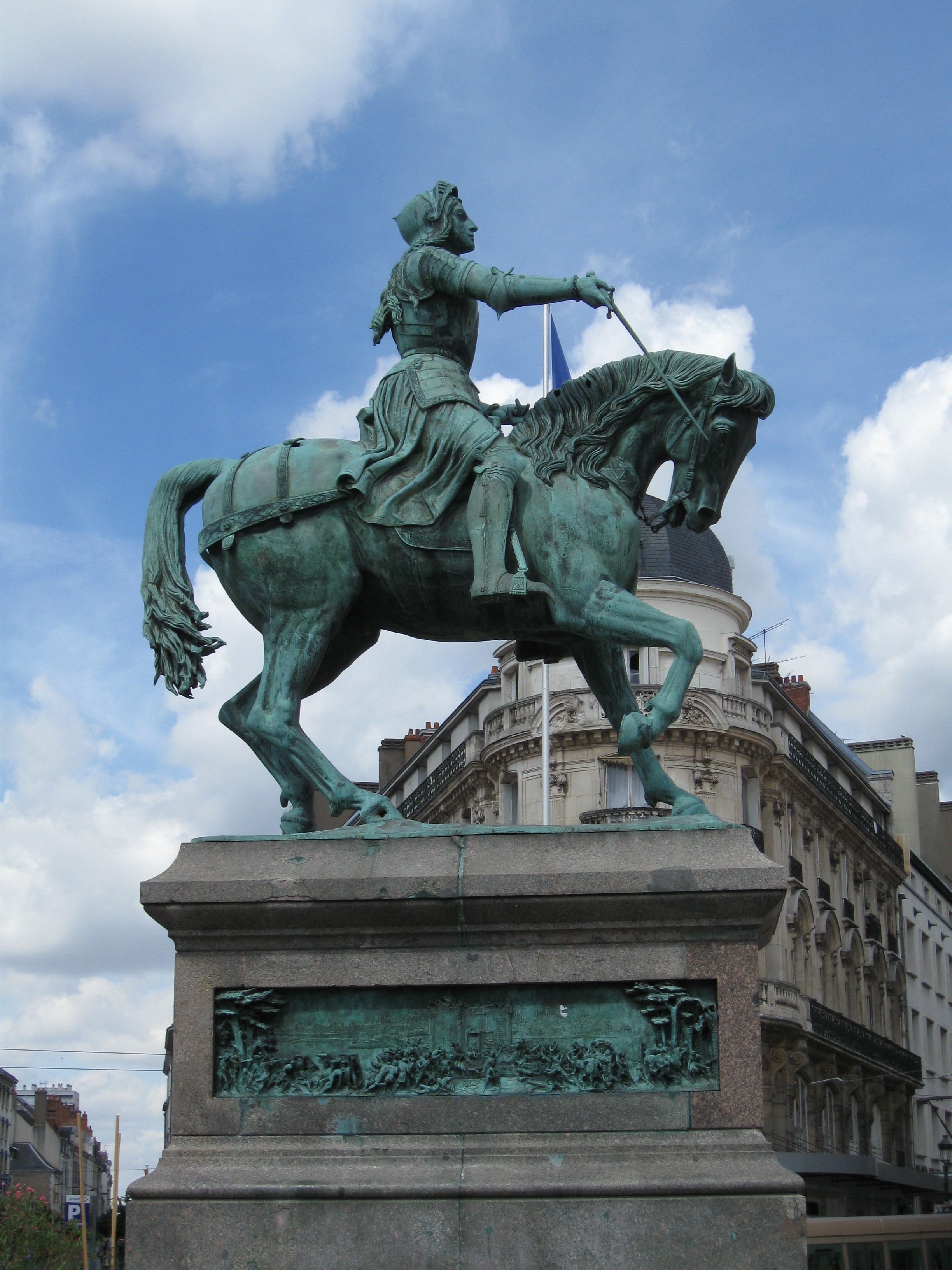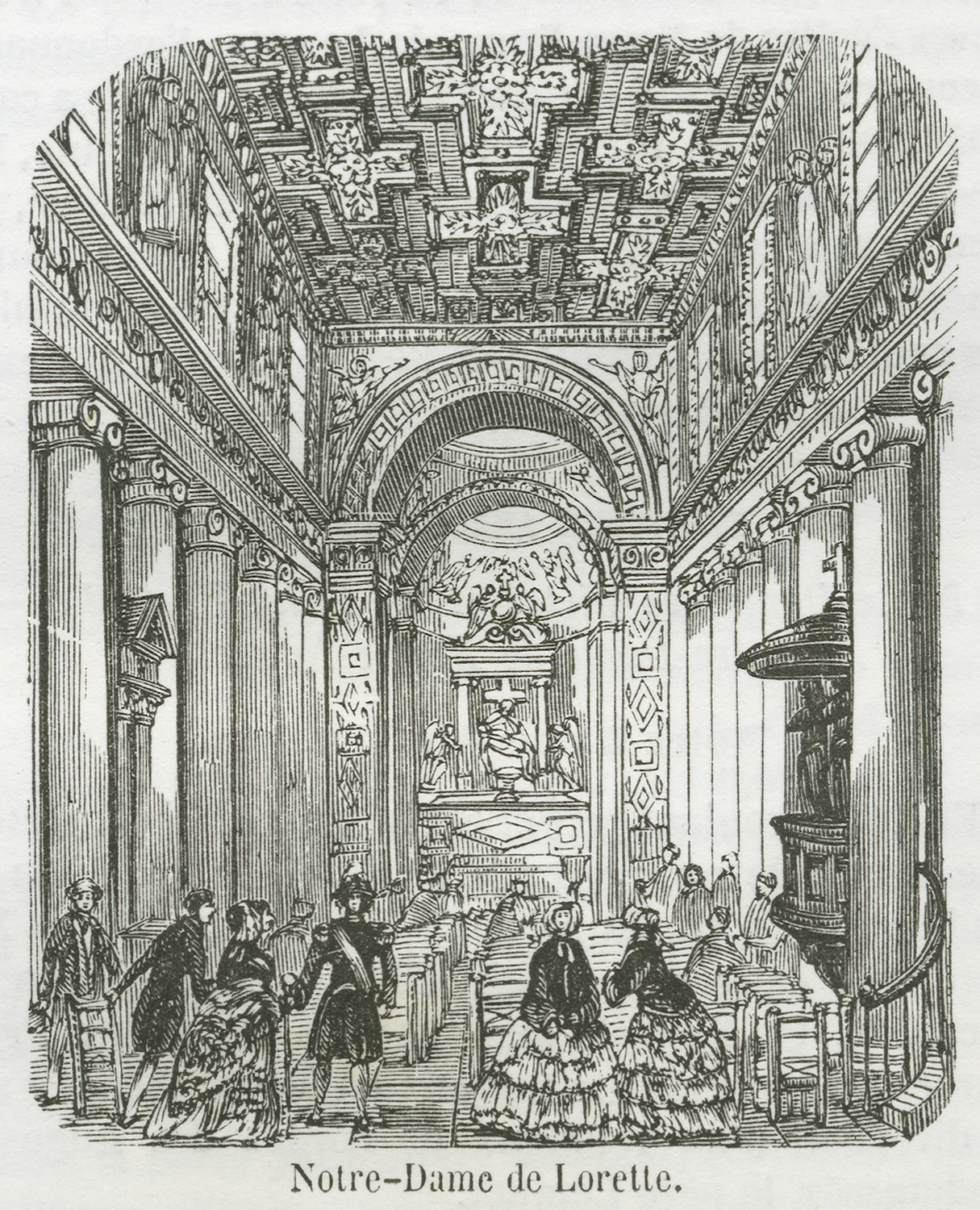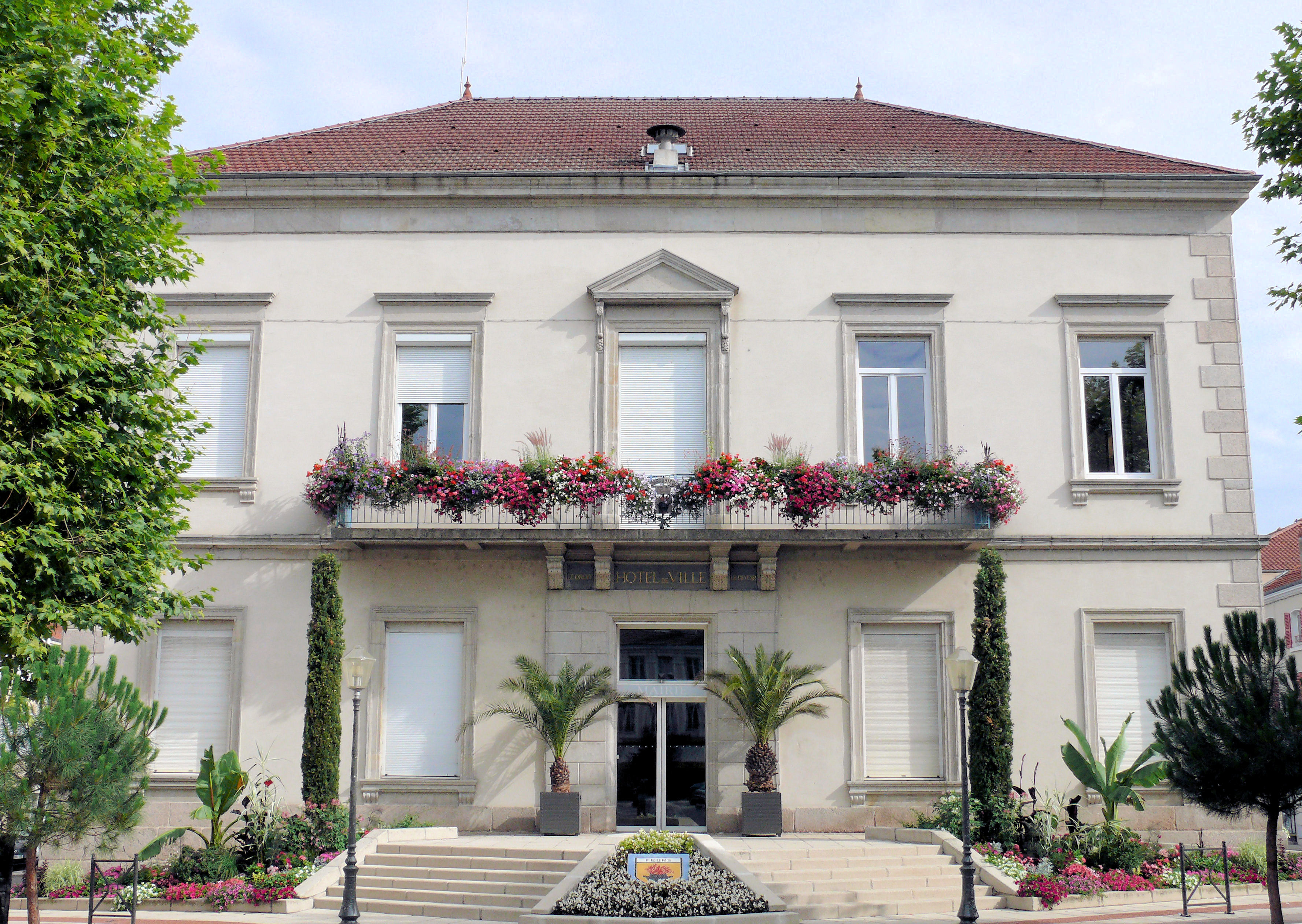|
Denis Foyatier
Denis Foyatier (21 September 1793 at Bussières, Loire – 19 November 1863 at Paris) was a French sculptor in the neoclassical style. Biography Foyatier was the child of a family of modest means (his father was a weaver and later a farmer at Bezin, a hamlet near Bussières, Loire). He started by working on religious figures, while taking a design course at Lyon. In 1817, he entered the École nationale supérieure des beaux-arts ("National Higher School for Arts and Crafts") in Paris. In 1819 he exhibited his first pieces and, aged 26, was awarded a scholarship for the French Academy in Rome at the Villa Médicis. At the Villa Médicis he created the mould for his piece Spartacus, which is very well known. A Royal Command of 1828 for a production in marble made him famous. After a brilliant career as a sculptor and painter, he died on 19 November 1863 and is buried in the Petit-Clamart cemetery in a suburb of Paris. Some of Foyatier's works have been lost; several were ... [...More Info...] [...Related Items...] OR: [Wikipedia] [Google] [Baidu] |
Bussières, Loire
Bussières () is a commune in the Loire department in central France. Population See also *Communes of the Loire department The following is a list of the 323 communes of the Loire department of France. The communes cooperate in the following intercommunalities (as of 2020):Communes of Loire (department) {{Loire-geo-stub ... [...More Info...] [...Related Items...] OR: [Wikipedia] [Google] [Baidu] |
Roanne
Roanne (; frp, Rouana; oc, Roana) is a commune in the Loire department, central France. It is located northwest of Lyon on the river Loire. It has an important Museum, the ''Musée des Beaux-arts et d'Archéologie Joseph-Déchelette'' (French), with many Egyptian artifacts. Economy Roanne is known for gastronomy (largely because of the famous Troisgros family), textiles, agriculture and manufacturing tanks. Roanne station has rail connections to Clermont-Ferrand, Saint-Étienne, Moulins and Lyon. History The toponymy is Gaulish, ''Rod-Onna'' ("flowing water") which became ''Rodumna'', then ''Rouhanne'' and ''Roanne''. The town was sited at a strategic point, the head of navigation on the Loire, below its narrow gorges. As a trans-shipping point, its importance declined with the collapse of long-distance trade after the fourth century. In the twelfth century, the site passed to the comte du Forez, under whose care it began to recover. An overland route led to Lyon and the ... [...More Info...] [...Related Items...] OR: [Wikipedia] [Google] [Baidu] |
Notre-Dame-de-Lorette, Paris
Notre-Dame-de-Lorette is a Roman Catholic Church located in the 9th arrondissement of Paris, It was built between 1823 and 1836 in the Neo-classical architectural style by architect Louis-Hippolyte Lebas, in a neighbourhood known as the New Athens, for its many artistic and scholarly residents in the 19th century, including George Sand, Pierre-Auguste Renoir, and Alexandre Dumas. While the exterior is classical and austere, the church interior is known for its rich collection of paintings, sculpture, and polychrome decoration. History A 17th-century chapel dedicated to Notre-Dame-de-Lorette existed on the same site at 54 rue Lamartine but during the French Revolution, it was nationalised by the Revolutionary government, closed, sold and demolished. In 1821, as the population of the neighbourhood was growing rapidly, plans were made to build a new church, with Louis-Hippolyte Lebas as the architect. Originally, the church was planned to face northward towards Montmartre, but e ... [...More Info...] [...Related Items...] OR: [Wikipedia] [Google] [Baidu] |
Palais Du Luxembourg
The Luxembourg Palace (french: Palais du Luxembourg, ) is at 15 Rue de Vaugirard in the 6th arrondissement of Paris. It was originally built (1615–1645) to the designs of the French architect Salomon de Brosse to be the royal residence of the regent Marie de' Medici, mother of King Louis XIII. After the Revolution it was refashioned (1799–1805) by Jean Chalgrin into a legislative building and subsequently greatly enlarged and remodeled (1835–1856) by Alphonse de Gisors. The palace has been the seat of the upper houses of the various French national legislatures (excepting only the unicameral National Assembly of the Second Republic) since the establishment of the ''Sénat conservateur'' during the Consulate; as such, it has been home to the Senate of the Fifth Republic since its establishment in 1958. Immediately west of the palace on the Rue de Vaugirard is the Petit Luxembourg, now the residence of the Senate President; and slightly further west, the Musée du Luxembo ... [...More Info...] [...Related Items...] OR: [Wikipedia] [Google] [Baidu] |
Jardin Du Luxembourg
The Jardin du Luxembourg (), known in English as the Luxembourg Garden, colloquially referred to as the Jardin du Sénat (Senate Garden), is located in the 6th arrondissement of Paris, France. Creation of the garden began in 1612 when Marie de' Medici, the widow of King Henry IV, constructed the Luxembourg Palace as her new residence. The garden today is owned by the French Senate, which meets in the Palace. It covers 23 hectares (56.8 acres) and is known for its lawns, tree-lined promenades, tennis courts, flowerbeds, model sailboats on its octagonal Grand Bassin, as well as picturesque Medici Fountain, built in 1620. The name Luxembourg comes from the Latin Mons Lucotitius, the name of the hill where the garden is located. History In 1611, Marie de' Medici, the widow of Henry IV and the regent for the King Louis XIII, decided to build a palace in imitation of the Pitti Palace in her native Florence. She purchased the Hôtel du Luxembourg (today the Petit Luxembourg) and began ... [...More Info...] [...Related Items...] OR: [Wikipedia] [Google] [Baidu] |
Jurist
A jurist is a person with expert knowledge of law; someone who analyses and comments on law. This person is usually a specialist legal scholar, mostly (but not always) with a formal qualification in law and often a legal practitioner. In the United Kingdom the term "jurist" is mostly used for legal academics, while in the United States the term may also be applied to a judge. With reference to Roman law, a "jurist" (in English) is a jurisconsult (''iurisconsultus''). The English term ''jurist'' is to be distinguished from similar terms in other European languages, where it may be synonymous with legal professional, meaning anyone with a professional law degree that qualifies for admission to the legal profession, including such positions as judge or attorney. In Germany, Scandinavia and a number of other countries ''jurist'' denotes someone with a professional law degree, and it may be a protected title, for example in Norway. Thus the term can be applied to attorneys, judges an ... [...More Info...] [...Related Items...] OR: [Wikipedia] [Google] [Baidu] |
Cincinnatus
Lucius Quinctius Cincinnatus ( – ) was a Roman patrician, statesman, and military leader of the early Roman Republic who became a legendary figure of Roman virtue—particularly civic virtue—by the time of the late Republic. Cincinnatus was an opponent of the rights of the plebeians (the common citizens) who fell into poverty because of his son Caeso Quinctius's violent opposition to their desire for a written code of equally enforced laws. Despite his relatively old age, he worked his own small farm until an invasion prompted his fellow citizens to call for his leadership. He came from his plough to assume complete control over the state but, upon achieving a swift victory in only 16 days, relinquished his power and its perquisites and returned to his farm. His success and immediate resignation of his near-absolute authority with the end of this crisis (traditionally dated to 458 BC) has often been cited as an example of outstanding leadership, service to the greater good ... [...More Info...] [...Related Items...] OR: [Wikipedia] [Google] [Baidu] |
Fanny Lewald
Fanny Lewald (21 March 1811 – 5 August 1889) was a German novelist and essayist and a women's rights activist. Life and career Fanny Lewald was born at Königsberg in East Prussia in 1811 to a bourgeois, Jewish family. She was taken out of school at thirteen to learn household skills she would need as a wife. Lewald was intended to marry a young theologian at age seventeen and converted to Christianity for the marriage. However, her betrothed died before the wedding took place. She traveled in the German Confederation, France and Italy. In 1841 she published her first novel in her cousin August Lewald's periodical ''Europa'', under the title ''Der Stellvertreter''. In 1845, she settled in Berlin. Here, in 1854, she married the author Adolf Stahr, a cultural and art historian. Lewald first received attention for her writing after the publication of a letter she wrote about a court trial she had attended. Lewald's cousin, August Lewald, published the letter in the Stuttgart perio ... [...More Info...] [...Related Items...] OR: [Wikipedia] [Google] [Baidu] |
Jardin Des Tuileries
The Tuileries Garden (french: Jardin des Tuileries, ) is a public garden located between the Louvre and the Place de la Concorde in the 1st arrondissement of Paris, France. Created by Catherine de' Medici as the garden of the Tuileries Palace in 1564, it was eventually opened to the public in 1667 and became a public park after the French Revolution. Since the 19th century, it has been a place where Parisians celebrate, meet, stroll and relax. History The Italian Garden of Catherine de' Medici (16th century) File:Tuileries projet et jardins.jpg, Plan for the palace and gardens by Jacques I Androuet du Cerceau, 1576–1579 File:Map of Tuileries and Louvre, as in c. 1589.png, Plan of the Tuileries garden in about 1589. The Louvre is to the right In July 1559, after the accidental death of her husband, Henry II, Queen Catherine de' Medici decided to leave her residence of the Hôtel des Tournelles, at the eastern part of Paris, near the Bastille. Together with her son, the ... [...More Info...] [...Related Items...] OR: [Wikipedia] [Google] [Baidu] |
Musée Du Louvre
The Louvre ( ), or the Louvre Museum ( ), is the world's most-visited museum, and an historic landmark in Paris, France. It is the home of some of the best-known works of art, including the ''Mona Lisa'' and the ''Venus de Milo''. A central landmark of the city, it is located on the Right Bank of the Seine in the city's 1st arrondissement (district or ward). At any given point in time, approximately 38,000 objects from prehistory to the 21st century are being exhibited over an area of 72,735 square meters (782,910 square feet). Attendance in 2021 was 2.8 million due to the COVID-19 pandemic, up five percent from 2020, but far below pre-COVID attendance. Nonetheless, the Louvre still topped the list of most-visited art museums in the world in 2021."The Art Newspaper", 30 March 2021. The museum is housed in the Louvre Palace, originally built in the late 12th to 13th century under Philip II. Remnants of the Medieval Louvre fortress are visible in the basement ... [...More Info...] [...Related Items...] OR: [Wikipedia] [Google] [Baidu] |
Orléans Jeanne D'Arc Place Du Martroi
Orléans (;"Orleans" (US) and , ) is a city in north-central France, about 120 kilometres (74 miles) southwest of Paris. It is the prefecture of the of and of the of |
Feurs
Feurs (; frp, Fuèrs) is a commune in the department of Loire, Auvergne-Rhône-Alpes, France. History Antiquity The city was founded by the Romans. The name Feurs is a contraction of ''Segusiavorum Forum''. With a forum the Gallo-Roman era, city was the capital of Ségusiaves as is indicated by Ptolemy and appears on the Tabula Peutingeriana. By extension, the city gave its name to Forez. Vestiges of the ancient Roman city are located by the current post office. Archaeologists have unearthed a theater, sewers, milestones, inscriptions, statuettes and pottery that reflect the importance, at that time, of the Roman the town, located near important Roman roads. Middle Ages A church dedicated to St. Baudile is reported in 960. A second dedicated to the Virgin Mary appears in the texts in 1001. A Castle in Feurs is reported in 1246. In the Middle Ages, the city had no bridge over the Loire but there was a harbor(953) and another close to Randans (1060). File:Vestiges de la cur ... [...More Info...] [...Related Items...] OR: [Wikipedia] [Google] [Baidu] |






.jpg)
